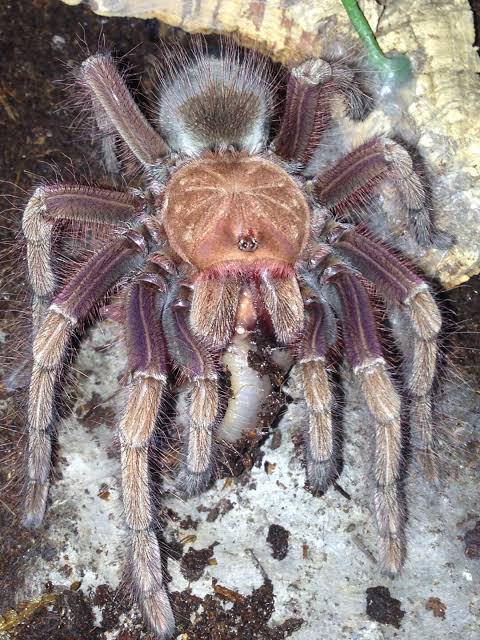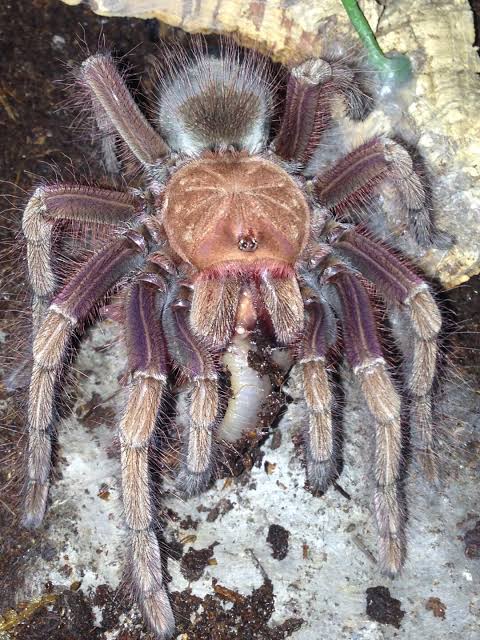Tarantuladen.co.za
Pinkfoot Goliath (Theraphosa apophysis)
Pinkfoot Goliath (Theraphosa apophysis)
Out of stock
Couldn't load pickup availability
The true titan of the tarantula world, Theraphosa apophysis rivals — and may even exceed — the size of Theraphosa blondi. With its iconic pink-tipped feet, immense leg span, and sheer bulk, it’s a breathtaking giant suited only for experienced keepers ready for serious humidity, size, and attitude.
Quick Facts
Common Name: Pinkfoot Goliath
Scientific Name: Theraphosa apophysis
Origin: Venezuela, Brazil, Colombia
Size: Up to 11 inches (28 cm+) leg span
Lifespan:
- Females: 15–20+ years
- Males: ~4–5 years
Temperament: Defensive, nervous, and intimidating — not for beginners
Coloration
Deep chocolate brown or reddish-brown body
Striking pink “socks” on the tarsi (feet)
Long, dense hair gives a plush, bulky appearance
Juveniles often show more contrast, with paler feet
Housing & Care
Enclosure Type: Terrestrial — requires lots of space and depth
Substrate: 6–8 inches of moist substrate (coco fiber/topsoil mix)
Humidity: 80–90% — high humidity is essential
Temperature: 75–82°F (24–28°C)
Decor:
- Large cork bark slab or half-log hide
- Plenty of leaf litter and moss
- Wide, shallow water dish
- Excellent airflow to avoid mold and stagnation
This species demands perfect humidity with excellent ventilation — a difficult balance.
Feeding
Diet: Crickets, dubia roaches, superworms; may take pinky mice sparingly
Feeding Schedule:
- Slings: 2–3x/week
- Juveniles: Weekly
- Adults: Every 10–14 days
Aggressive feeder — will strike prey with impressive force
Why Keep One?
Massive size — among the world’s largest tarantulas
Pink feet are a unique and stunning feature
Rare and sought after in the hobby
Powerful presence — truly awe-inspiring
Excellent for advanced display enclosures (if you can meet the care requirements)
Notes
Humidity-sensitive — prone to dehydration and molting issues if care is off
Not for handling — large fangs and strong defensive response
Can kick extremely irritating urticating hairs
Needs space — this isn’t a spider for small enclosures
Molts can be problematic if humidity and hydration aren’t just right
Not for beginners — this species is challenging in both care and temperament
Share


